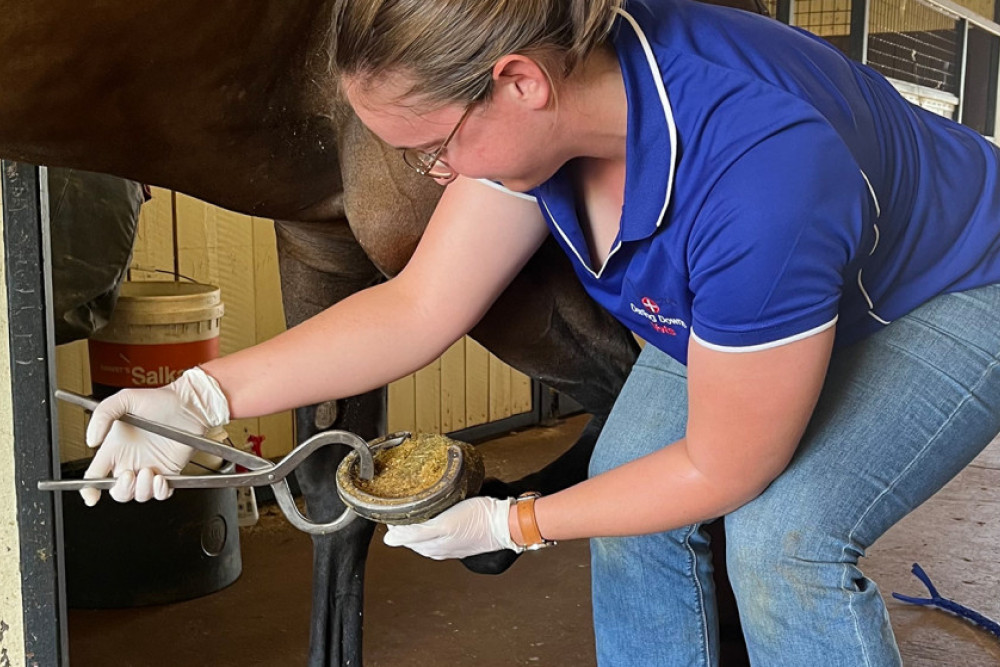Agricultural
9 March, 2022
Wet weather sees increase in hoof abscesses
We are currently seeing a lot of ponies and horses with hoof abscesses after the rainy weather we encountered last weekend.

A warm, wet or muddy environment is the perfect place for bacteria to grow, as wet footing softens the structures of the hoof.
Even only a day or two of rain is enough to soften a hoof and spawn a blooming of bacteria.
With this kind of environment all horses are susceptible to abscesses.
Horses that have experienced laminitis are at a much higher risk of infection due to weakened laminae.
Distortions in hoof structure, cracks, or injuries of the hoof also increase risk of infection.
Abscesses occur when water and mud enter through cracks in the hoof wall or from an object penetrating the sole and creating an entrance point– for example, a sharp rock or a lost nail.
This then ‘brews’ and forms a pocket of fluid and infection which will cause the horse to be very lame until the abscess is drained.
In some horses the pressure of the abscess can build up that much that the horse will not place
any weight on that leg at all.
Some horses will also display heat in the hoof, an increase in the strength of the pulse supply to the hoof (digital pulse) and swelling in the lower areas of the limb.
If you suspect that your horse has a hoof abscess it will need to be drained by your vet or farrier in order to relieve the pain.
If the abscess cannot be drained then a poultice can be applied to the hoof to encourage drainage.
The horse should also be kept in a clean and dry environment.
- Darling Downs Vets


